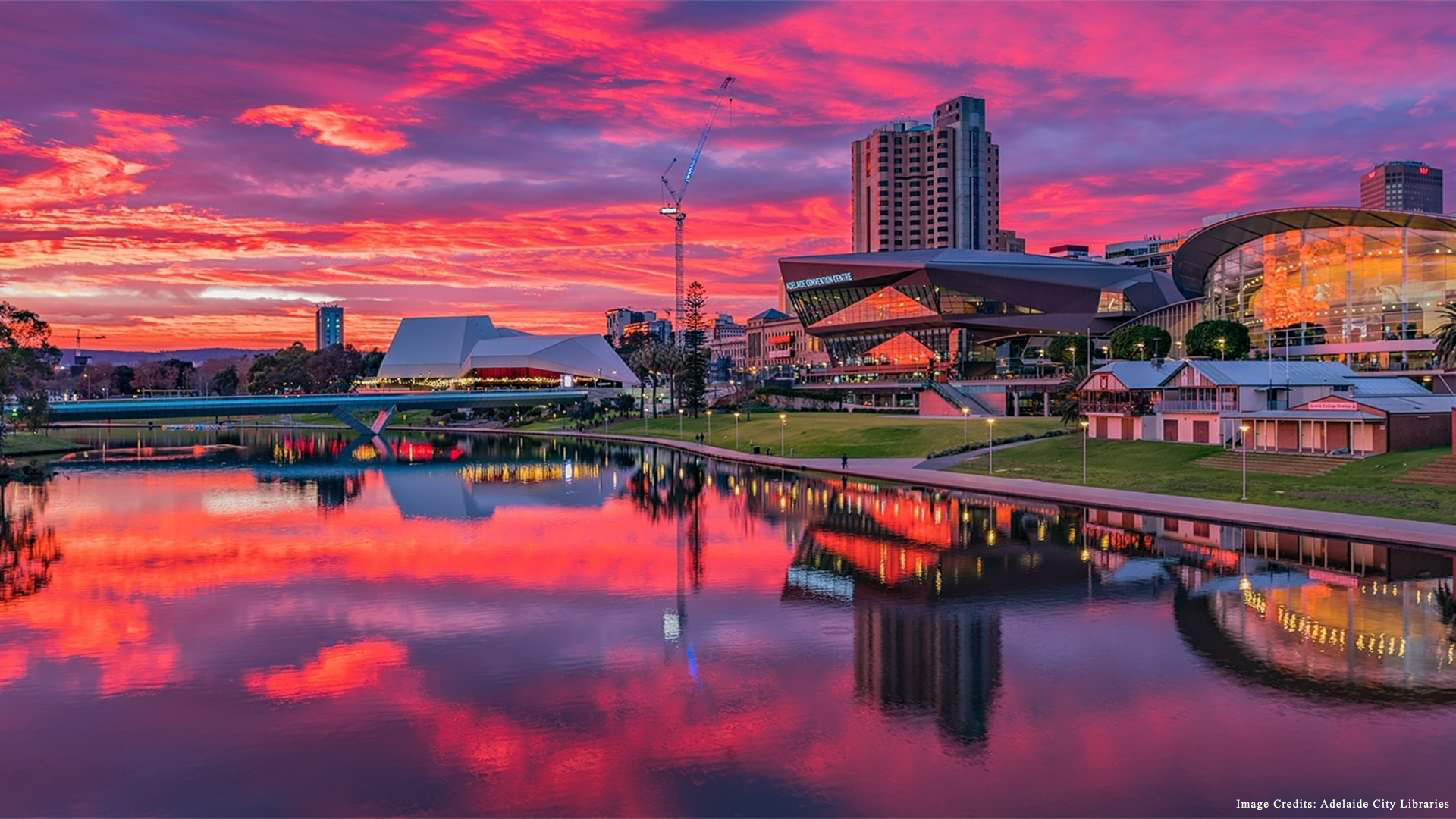Adelaide is the capital city of the state of South Australia, and the fifth-most populous city of Australia. In June 2014, Adelaide had an estimated resident population of 1.3 million.[1] South Australia, with a population of 1.7 million, is a uniquely highly centralised state in Australia, with a lack of comparatively-sized rural population centres, and has over 75 percent of the state’s population contained in the metropolitan capital of Adelaide.
The demonym “Adelaidean” is used in reference to the city and its residents.[9][10] Adelaide is north of the Fleurieu Peninsula, on the Adelaide Plains between the Gulf St Vincent and the low-lying Mount Lofty Rangeswhich surround the city. Adelaide stretches 20 km (12 mi) from the coast to the foothills, and 90 km (56 mi) from Gawler at its northern extent to Sellicks Beach in the south.
Named in honour of Adelaide of Saxe-Meiningen, queen consort to King William IV, the city was founded in 1836 as the planned capital for a freely-settled British province in Australia. Colonel William Light, one of Adelaide’s founding fathers, designed the city and chose its location close to the River Torrens, in the area originally inhabited by the Kaurna people. Light’s design set out Adelaide in a grid layout, interspaced by wide boulevards and large public squares, and entirely surrounded by parklands. Early Adelaide was shaped by prosperity and wealth — up until the Second World War, it was Australia’s third largest city.[11] It has been noted for early examples of religious freedom, a commitment to political progressivism and civil liberties. It has been known as the “City of Churches” since the mid-19th century.[12]
As South Australia’s seat of government and commercial centre, Adelaide is the site of many governmental and financial institutions. Most of these are concentrated in the city centre along the cultural boulevard of North Terrace, King William Street and in various districts of the metropolitan area. Today, Adelaide is noted for its many festivals and sporting events, its food and wine, its long beachfronts, and its large defence and manufacturing sectors. It ranks highly in terms of liveability, being listed in the Top 10 of The Economist Intelligence Unit‘s World’s Most Liveable Cities index in 2010,[13] 2011,[14] 2012[15] and 2015.[16] It was also ranked the most liveable city in Australia by the Property Council of Australia in 2011,[17] 2012[18] and 2013.[19]




